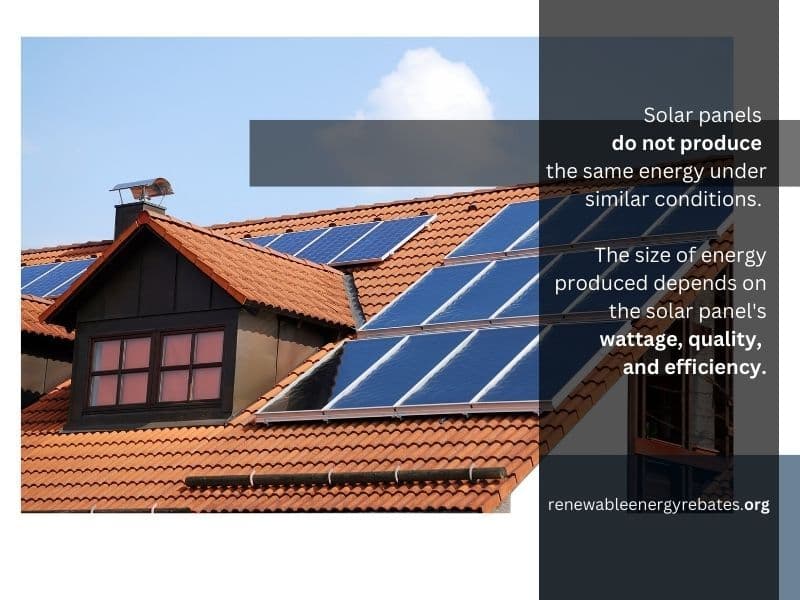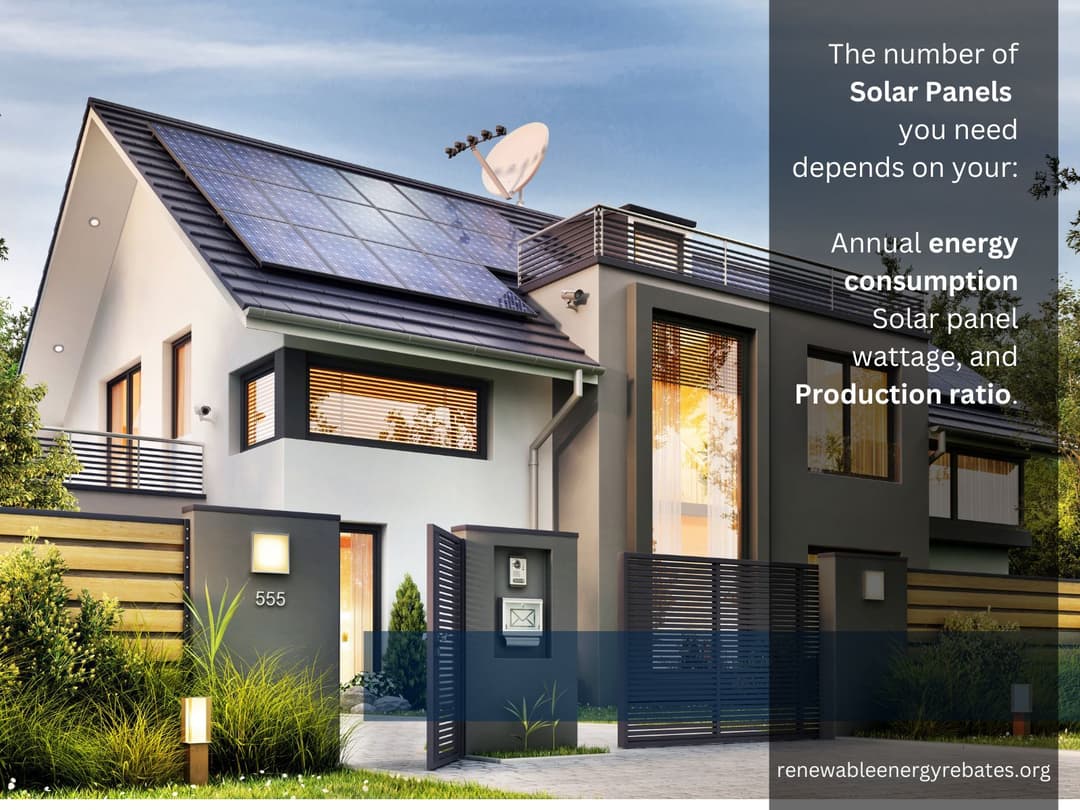Cost of Solar Panels in North Dakota
A Comparison of Solar Panel Cost in North Dakota
Key Details
- Average solar panel cost in North Dakota is $2.42/watt, lower than the national average.
- Residents can either buy or lease their solar system, with advantages and disadvantages to both options.
- Monocrystalline solar panels have the highest efficiency ratings at 20% and above.
- It is possible to run a house solely on solar power in North Dakota with sufficient energy storage systems.
- The size of the solar system needed to go off-grid depends on sunshine, electricity usage, chosen type of solar panel, and available mounting area.
How Much Do Solar Panels Cost in North Dakota?
The average cost of solar panels in North Dakota is between $2.42 per watt. A 5KW system in North Dakota costs about $12,100 on average, while installing a 6KW system would cost $14,520.

However, solar installation costs in North Dakota can be reduced with the Federal Tax Credit, which allows residents to claim up to 30% of their solar system installation costs. This reduces installation costs to $8,470 for 5KW systems and $10,177 for 6KW systems.
The cost of solar panels per watt in North Dakota is lower than the national average. North Dakota also has one of the lowest electricity rates in America. As of 2021 residents in North Dakota paid about 8.65 cents per kilowatt-hour.
Average Solar Panel Cost in North Dakota
| Size | Solar Panel Installation Cost | System Installation Cost After Solar Credit (30%) | Home Size |
| 3 kW | $7,260 | $5,082 | < 1,000 sq ft |
| 5 kW | $12,100 | $8,470 | 1,000 sq ft |
| 8 kW | $19,350 | $13,545 | 1,100 sq ft |
| 9 kW | $21,780 | $15,246 | 1,300 sq. ft. |
| 11 kW | $26,620 | $18,742 | 1,700 sq ft |
| 13 kW | $31,460 | $22,022 | 2,100 sq ft |
| 14 kW | $33,880 | $23,716 | 2,300 sq ft |
| 15 kW | $36,300 | $25,410 | > 2,400 sq ft |
How Many Solar Panels Do I Need in North Dakota?
The number of solar panels in North Dakota required will depend on several key factors.
Solar industry experts estimate a typical American home will require 17 to 22 solar panels. This is the minimum required to power the home fully.
The following key factors will be required for a more accurate estimation of the home’s solar power needs.
- The home's annual electricity consumption
- The wattage, efficiency, and size of the chosen solar panels
- The energy capacity of the solar system to be installed
- The climate and sunlight received in your location
To determine your home's annual consumption, simply use the values from your electricity bills. According to solar industry experts, the average American home uses 900 kWh per month, 30 kWh per day, or 1.25 kWh per hour.

If unsure of the exact panel wattage a low value and a high value can be used to create a range. The best types of monocrystalline solar panels can generate between 300 and 400 watts per panel.
Weather information sites put the average peak sunlight time in America according to about 5.3 hours daily. When the information has been collected, the number of solar panels needed can be determined via this formula. Multiply the household's hourly energy requirements by the peak sunlight hours and divide the result by the panel’s wattage.
Using these values and the formula you can calculate the solar power required first which is 1250Wh*5.3 hours of sun= 6625 watts. For a system of 400W panels, 6625/400= 16.6 which is 17 panels. For a system of 300W panels, 6625/300=22 panels. Hence, the home will require between 17 and 22 solar panels to power it.
Another thing to consider is the cost of the system. This will mainly be determined by the type of solar panels chosen and the number required.
How Many Solar Panels do I need for a 3-bedroom house?
The average size of a 3-bedroom house in North Dakota is between 1700 and 2000 square feet. According to solar industry experts, the solar requirement of an area with 5.3 hours of peak sunlight is 3.17 watts per square foot.
For a 2000 square foot building, this becomes 2000 *3.17= 6,340KW
If the system is going to use 300W solar panels, the number of panels required is 6340/300=21.13. This means a 3-bedroom house will require around twenty one 300W solar panels.
How Many Solar Panels do I need for a 4-bedroom house?
The average 4-bedroom house in North Dakota is around 2000 to 2500 square feet. Using the calculated solar requirement of 3.17 watts per square foot for an average peak sunlight time of 5.3 hours daily.
For a four-bedroom house, the required solar power is 2500*3.17 = 7925 watts.
For a system of 300W solar panels, the number required would be 7925/300 = 26.
This means the average four-bedroom house in North Dakota would require about twenty six 300W solar panels.
Do All Solar Panels Produce the Same Energy
No, all types of solar panels do not generate the same amount of energy. The energy generated by a solar panel will depend on several factors. These include the material it’s made from, its surface area, efficiency rating, and so on.
The 4 main types of solar panels available in today’s market are the following
- Passivated Emitter Rear Cells(PERC) panels(upgraded monocrystalline)
- Monocrystalline solar panels
- Polycrystalline solar panels
- Thin Film Solar Panels
The PERC panels have the highest capacity and efficiency, being able to generate well over 300w. Next are simple monocrystalline panels which can generate up to 300w and a little higher.
Third is the polycrystalline panels. Recent improvements in solar technology allow them to come close generating between 240w and 300w.
There are several different types of thin-film solar panels. These types of panels are grouped based on the materials they are made from. These include Cadmium Telluride(CdTe) panels, Amorphous Silicon(a-Si), and Copper Indium Gallium Selenide(CIGS). Thin film solar panels don't have a standard size so there is no uniform power capacity measurement.
The power generation of thin film panels will differ from each other depending on physical size. However, crystalline panels will always generate more power than thin film panels of similar size.
Monocrystalline panels are the most expensive due to their expensive energy-demanding production method. Polycrystalline panels are cheaper because they are made using the fragments left over from monocrystalline production.
| Type of Panel | Efficiency Rating |
| Mono Passivated emitter rear cell (PERC) | 5% higher than monocrystalline panels(Best) |
| Monocrystalline | 20% and above |
| Polycrystalline | 15% to 17% |
| Copper Indium Gallium Selenide (CIGS) | 13% to 15% |
| Cadmium Telluride (CdTe) | 9% to 11% |
| Amorphous Silicon (a-Si) | 6% to 8% |
Which Type of Solar Panel is Best for Home Use in North Dakota?
Monocrystalline solar panels are the best panels for use in North Dakota solar power installation. These cells are rated the highest in terms of power generation and efficiency.
Although they are more expensive their design allows them to generate more power than other panels.
PERC monocrystalline panels are upgraded with a new technology called a passivation layer. This passivation layer at the rear of the cells in the panel improves efficiency in several ways.
- The layer at the cell's rear reflects light back into it, absorbing even more solar energy.
- It allows lightwaves with higher wavelengths to be absorbed by the cell.
- It prevents the cell’s metal back sheet from being heated up which reduces efficiency.
- This affects the inclination of electrons to combine and slow down their flow throughout the system.
This increased generation and efficiency from Monocrystalline panels comes with a higher price.
Another good option for North Dakota Solar installation is polycrystalline solar panels. Polycrystalline panels are cheaper because they have lower production costs due to an easier production method. However, they have lower power generation and overall efficiency.
Can you Run a House Solely on Solar Panels in North Dakota?
High-efficiency solar panels and large-capacity batteries allow you to power the house completely. Costs for solar systems have also been reduced due to improvements in solar technology.
To run a home exclusively on solar power you must have a few considerations.
First figure out the solar energy production potential of your area. The amount of energy your area receives will greatly affect running your home strictly on solar. The sunnier your area the easier it will be. North Dakota receives a decent amount of annual sunlight at 3,925 kilojoules per meter squared.
Calculate the amount of electricity you require every month. To determine how much solar power you need to generate you should know how much you use. This will allow the solar installers to calculate how many solar panels are needed.
Consider the general environment of your location. This includes large buildings and tall trees in your general vicinity. These can shade your home and reduce the solar energy collected during sunny hours. This can greatly affect the productivity of any installed panels for the solar system.
How Big of a Solar System do I need to go Off-Grid in North Dakota?
The size of the solar system required to go completely off-grid is determined by the following factors.
- The amount of sunshine your area receives
- The amount of electricity that you use
- The type of solar panels chosen for the system
- The area available for mounting the panels
These values can be put together in a simple formula to calculate the system needed to go off-grid. This can be done using the following steps.
Step one: Determine the amount of power required annually.
This can easily be found by consulting the electricity bills from your utility company. At the end of the bill, you will usually find the exact amount that was used. For the sake of this example let us use the national average. According to industry experts the typical American home uses approximately 10,700kWh a year. This is approximately 900 kWh a month.
Step two: Find out the average amount of sunshine your area receives daily.
This is also known as peak hours of sunlight. The size of the solar system can increase or decrease based on the amount of sunlight the array receives. The sunnier the area the fewer panels are required. The shape and size of the location of the panels are also important.
North Dakota in particular receives around 3.7 to 4.5 hours of peak sunlight according to the Global Solar Atlas Portal.
Monthly hours of peak sunlight = 4.5*30 = 135 hours
Step Three: Calculate how large of a system is required
The next step is to calculate the size of the system required to go off-grid. To calculate this divide the month energy consumption by the month peak electricity.
This is 900kWh/135h = 6.6KW
This means for this example a 6.6KW solar system is required to go off-grid. The last calculation is to find how many solar panels are required for the system.
Step Four: Calculate how many solar panels the system requires to meet its needs
To calculate the number of panels convert the required power to watts. After that is done, divide it by the chosen solar panel wattage. This will give the number of panels of that wattage required to generate that amount of power.
6.6KW = 6.6*1000 = 6600 watts
For this example let's say 300w panels are being used, that means
6600 / 300 = 22.
This system will require 22 300 watt solar panels to generate enough power to go completely off-grid.